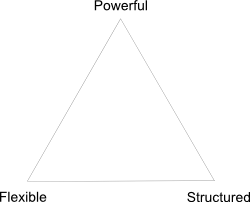The Grid Mule - An Introduction
Welcome to the first installment of our blog. I thought I'd kick things off by giving you a background on our project and fill you in on what we're trying to accomplish. If you haven't seen our main site, we'd love for you to take a look.
So ... we are creating a financial modeling tool. Why, you might ask, is such a tool necessary when we have tools as flexible as Excel or as powerful as Matlab? Well, for us, it boils down to 3 things:
-
Tools like Excel (OpenOffice, etc.), while extremely flexible and easy to get started with, are inherently error prone and difficult to audit. The problem lies in the fact that spreadsheet management and use has not really changed since VisiCalc was invented over 30 years ago. Sure, the interface has gotten better - but everything is still done by referencing columns and rows (e.g., formulas are created by entering text like "=A1+B1") rather than something more meaningful. This would be like programmers still programming in assembly language. We'd like to provide you more powerful tools so you can manage your information at a higher level of abstraction. So instead of thinking in terms of "A1" through "A12", you can think in terms of "revenue" for months 1 to 12.
-
Tools like Matlab (or SAS, R, etc.), while extremely powerful, are too difficult to use. They are at their core programming languages, not tools intended to be used by everyday financial analysts. But they do provide you with ways to manage information that are much more powerful than most spreadsheet tools offer. For example, you can create a vector of
revenue, a vector ofcost of goods soldand then create a formula forgross profitthat equalsrevenue - cost of goods sold. We'll have similar functionality in a more familiar interface. -
Specialized tools (e.g., Prophix or Budget Maestro for budgeting) are generally not flexible enough. They try to provide a structured environment where you get the benefits of security, constrained input, etc. but they miss the boat when it comes to flexibility. Rather than typing in a formula or using an interface that is fast and people are used to, they create drop down menus that are too limiting and cumbersome to be effective.
So for us, we are trying to build something that is:

In upcoming posts, I'll talk about how we attack each one and specific problems that are solved by our approach. I think it will become clear fairly quickly why you should be using our technology for your modeling needs.
ktr